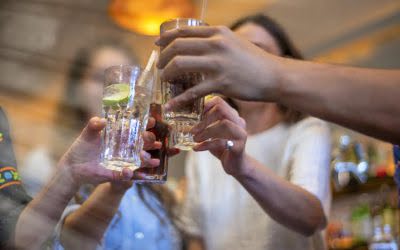Additionally, there’s a stark difference between wanting a glass of wine after a long day and obsessing about it all day long. While the first can be seen as a normal desire, the latter represents a craving which entails a mental preoccupation with alcohol that typically leads to problematic drinking. Recognizing the difference between the two can help to identify whether the cravings have started getting out of hand, laying the groundwork for effective coping strategies. Alcohol cravings are intense, often overwhelming urges to drink. They can be so powerful that they dominate your thoughts, making it difficult to focus on anything else. These cravings are a common experience for those trying to reduce their alcohol intake or maintain sobriety, especially in the early stages of recovery.
Avoid tempting situations.
A positive distraction can help occupy your thoughts and energy, giving you something to focus on besides the urge to drink. Both avoiding and distraction can work well, but if that’s all you do, they can leave you tired and fearful of urges. Pick a name for your urges that’s imaginative, strong, and meaningful to you. That little voice in your head that badgers and coaxes you. Some call it “The Inner Brat,” “The Alcohol Salesman,” “The Lobbyist,” “The https://shiningsprouts.com/5-types-of-alcoholics-according-to-the-niaaa/ Terrorist,” “The Whiner,” or just “The Enemy.” Pick a name that fits your experience with it. When cravings strike, one of the best things you can do is distract yourself.
Engage in healthy activities
By maintaining a journal to log cravings and reflecting on these triggers, individuals can develop proactive coping strategies and Substance abuse avoid situations that provoke cravings. Cognitive–behavioral therapy can take place one-on-one with a therapist or in small groups. This form of therapy is focused on identifying the feelings and situations (called “cues”) that contribute to heavy drinking and managing stress that can lead to a return to drinking.
- For anyone working toward sobriety, one of the most challenging and misunderstood aspects of recovery is dealing with alcohol cravings.
- When a craving arises, one way to defuse it is to examine it mindfully.
- Dehydration and poor nutrition can amplify the need for alcohol.
- Carefully expose yourself to common triggers while you’re with someone who’s supportive of you.
- There are several prescription medications that are shown to reduce alcohol cravings, helping people reduce or quit drinking.
How to Manage Cravings for Long-Term Recovery

With the absence of regular alcohol-induced dopamine releases, we might feel down or experience a mood dip. That’s the brain urging you to get back to your old ways, otherwise known as the withdrawal effect. Research shows that with repeated alcohol consumption, the brain starts anticipating the dopamine surge. So even before we take that first sip, just the thought of drinking can get our dopamine factories revved up! It’s like when we think about a chocolate cake in the middle of the night — even without tasting it, we can already feel that sweet delight. Because change is so difficult, it’s useful to have a guide when attempting to kick an addiction to drugs, alcohol or behavior.
- Others may experience ongoing urges to drink alcohol, especially in alcohol-related settings.
- Also, don’t let other people use or bring reminders of the addiction-related substance or behavior into your home.
- At their core, alcohol cravings are intense urges or thoughts about drinking.
- When cravings strike, one of the best things you can do is distract yourself.

However, trying to suppress the urge or push it away will only make it stronger. Accept that you’re experiencing a craving and don’t feel bad about it, but find a way to deal wit it. While getting sober is an important first step, it is only the beginning of your recovery from alcohol addiction or heavy drinking.
Surf the Urge
It’s all about adding layers of richness, building resilience, and crafting a life narrative filled with intent and purpose. Managing cravings, in all their persistent tug and pull, offers us a unique chance to reclaim control of our lives. Each time we face a craving head-on, it becomes more than just resisting temptation. It turns into a conscious choice to prioritize our well-being, our dreams, and our future. Drink regularly, and the brain thinks it’s getting too much of a good thing.
Teen & Young Adult Treatment Tracks
It’s crucial to know your triggers, both so you can avoid them and so you can recognize them when they appear. Even if you’re not quite sure why your craving persists, a change of setting might solve your problem. These are intense urges that sometimes seem to come from nowhere and feel irresistible. Learning to manage cravings is an essential skill for a successful recovery. Here are some strategies for dealing with cravings when they arise. Your health care provider or mental health provider will ask additional questions based on your responses, symptoms and needs.

Alcohol Cravings: How Long Do They Last and How to Manage Them
If you were having an alcohol craving, you would start by bringing your awareness to the present, and then observing the craving. You would avoid judging anything you were feeling, or trying to fight against it. You would simply let going back to drinking after being sober it exist, without actually following it. With time and practice, you would begin to learn that cravings eventually pass, and as a result they would become less powerful. Up to 75 percent of people in alcohol recovery will experience PAWS to one degree or another. If you ever find yourself wondering, “why am I craving alcohol,” there are probably several reasons.